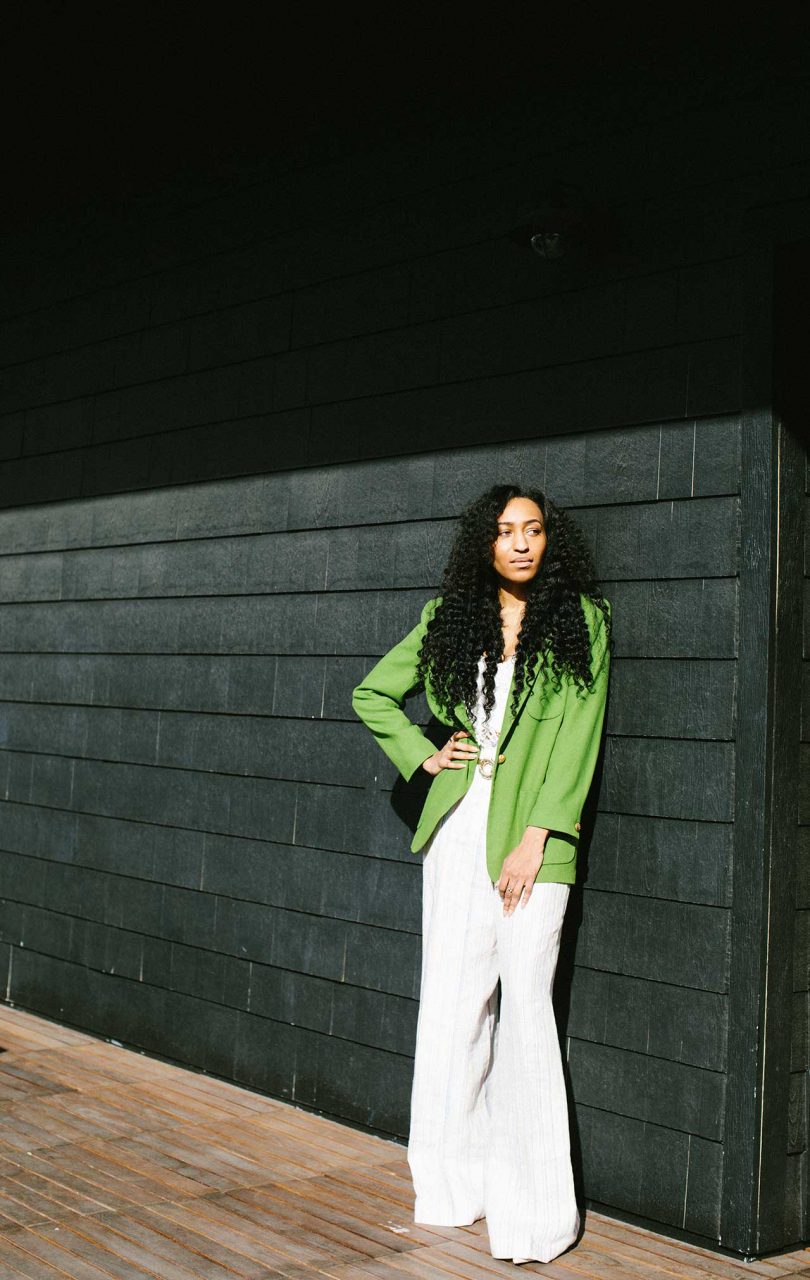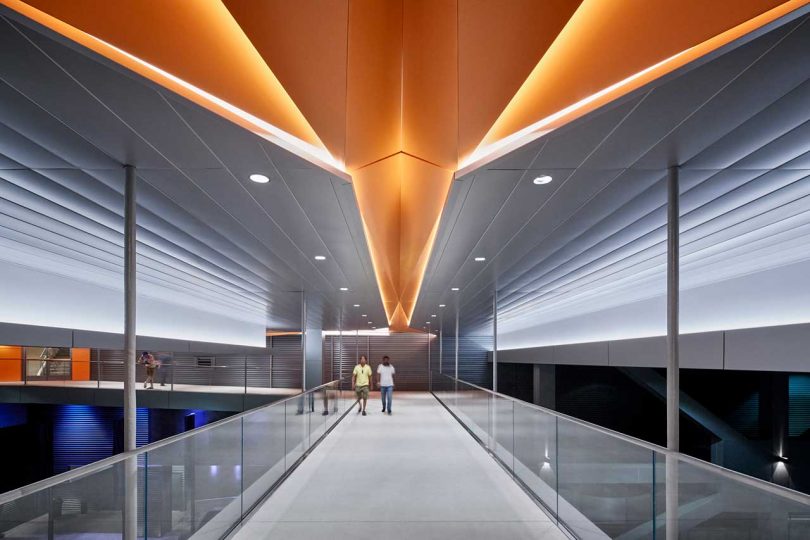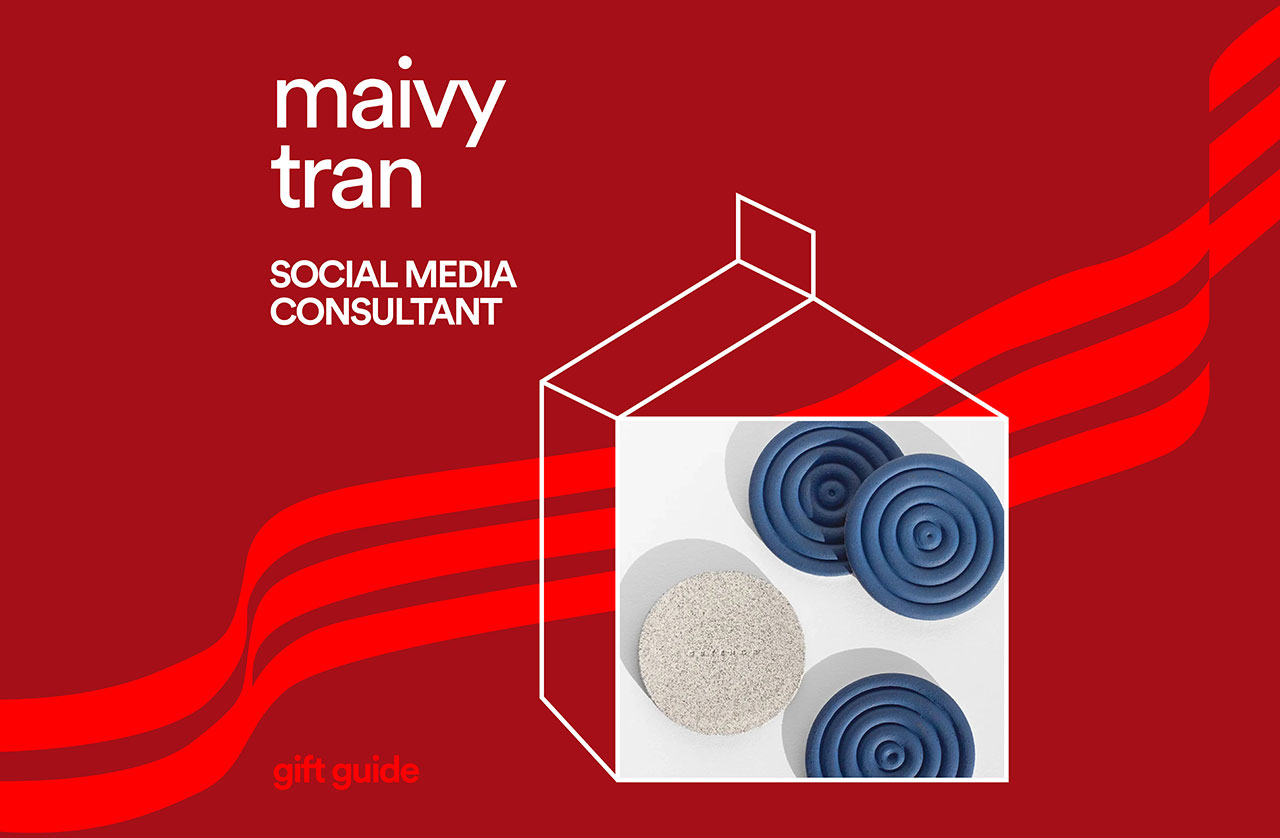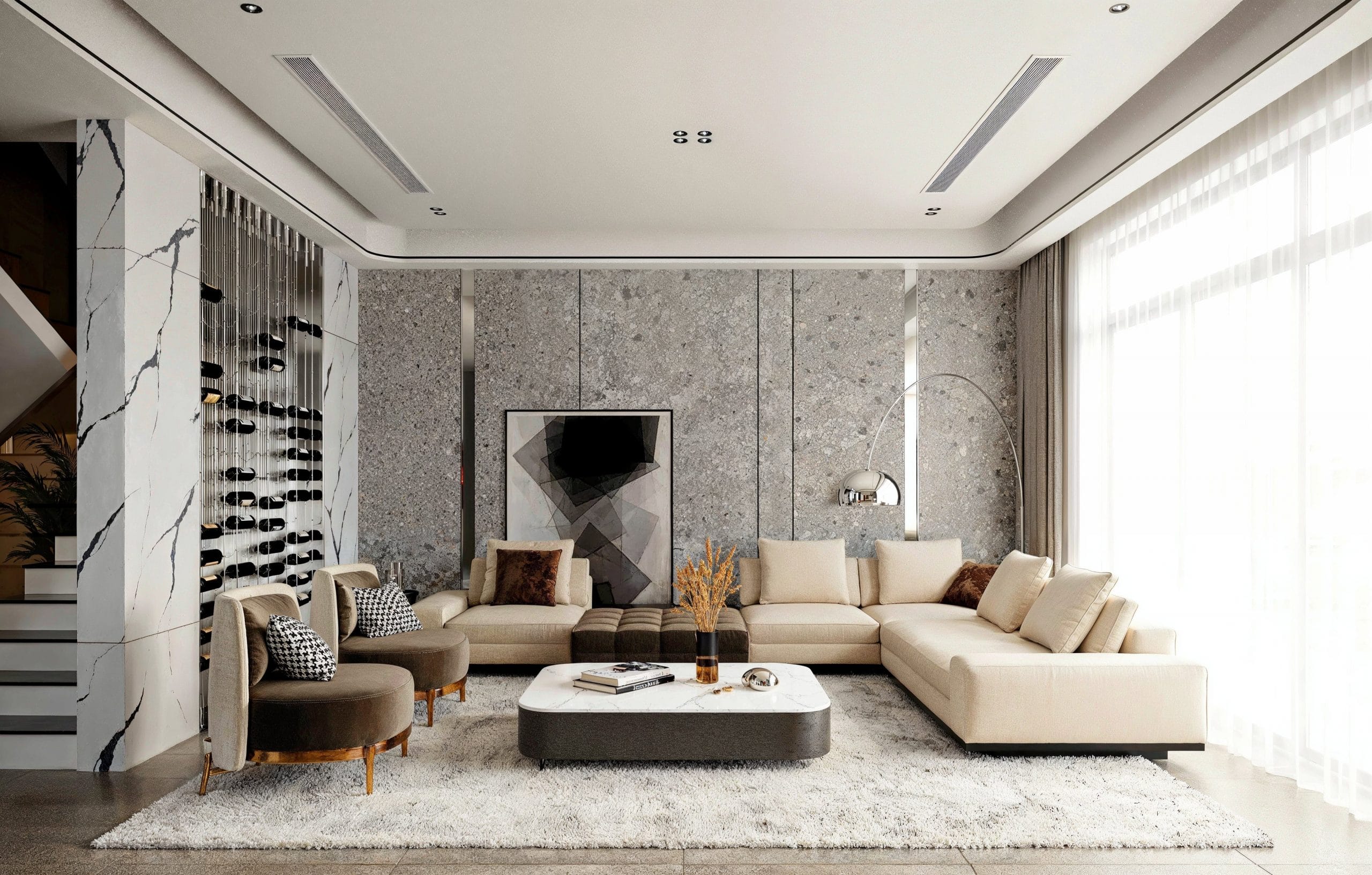Thanks to Kimberly Zerkel and Morgan Pansing for words and photos. Shot on location at H Club LA.
Adaeze Cadet knows that play matters.
As a child in Sacramento, the now-LA-based Principal and Design Director at renowned architecture firm HKS didn’t foresee the Master’s Degree, the board-room meeting notes, and teetering skyscrapers like San Francisco’s The Jasper with her name on it. She just knew that she really loved playing with her box of LEGO bricks.
At nine years old, in the midst of her block creations, she stood and declared to her family that she was going to be an architect. Instead of balking at her goal or treating it as a passing phase, Cadet’s parents understood how important it was to encourage it.
“My mom would take me to open houses so I could nit-pick over the design,” the architect and designer says while recalling her upbringing. “She got me a bunch of architecture books and really helped to foster that.”
But it was while flipping through these books that Cadet first recognized a problem that continues to plague the architectural world.

Adaeze Cadet on site at h Club in Los Angeles \ Photo: Morgan Pansing
“Nobody looked like me,” she recalls, “There are all of these great architects but not one of them, according to these textbooks, is Black or a woman.”
Lack of representation and blatant bias led to an early incident that nearly undid the years of self-motivation and encouragement from her family. It started with a specific professor at Philadelphia University, where Cadet had chosen to start her academic career.
My first professor — white, male — got me to question if I could be an architect. For my whole life, this is something I wanted to do, and he just kept laying into me and making me feel like my design was inadequate.
It took the encouragement and praise of outside critics to finally remind her of why she was studying architecture in the first place.
Knowing that she had talent to spare but not a single moment left to lose to unsupportive faculty or alienating classmates, Cadet transferred to Prairie View A&M University, an HBCU, where her educational experience became transformative.
“When I transferred, there was a huge difference. I received a lot more support from my professors. I had camaraderie with my classmates.” The need for connection and the ability to share her love of architecture with peers who looked like her was vital. “That foundation from Prairie View helped me have faith and confidence in my abilities. Which led to my success, which is how I’ve been able to advance at the firm.”
And advance she has: In late January, HKS, an international architecture and design firm with more than two dozen offices around the world, announced that Cadet was promoted to Principal, one of the firm’s most senior roles. This appointment makes Adaeze Cadet the first Black female Principal ever at HKS, an accomplishment that is considered both no small feat, and long overdue.

h Club Los Angeles, by HKS architects and Interior Designer Russell Sage Studio \ Photo: Benny Chan
But despite an illustrious career, including a Master’s Degree in Architecture from Prairie View and overseeing massive projects — from multi-family units to hotels and resorts — up and down the West Coast, Cadet has still had to face the many challenges of being a Black woman in a white-male-dominated sphere. Being talked over in meetings, having consultants question her work, clients who address her white colleagues first… the disrespect seemed to culminate in one particularly jarring moment. When introduced by a former client to a reporter at an event, she was asked if she was the client’s assistant. Cadet had, at this point, been working for HKS for over ten years and was the firm’s Vice President.
Being a Black person, we’re taught to make white people comfortable. So even though I wanted to be like, ‘What the f…,’ I couldn’t. Instead I said, ‘I know, I look a lot younger than I am,’ and laughed it off.

Adaeze Cadet on site at h Club in Los Angeles \ Photo: Morgan Pansing
The emotional toll of inequality, on top of a busy work schedule, is enough to drain anyone’s energy. So how to stay charged and ready for action? When Cadet feels especially worn, she relies on some well-chosen motivational mugs (“I have one that says ‘Be fierce,’” she smiles), sewing, or Beyonce lyrics to get through the day.
But the greatest motivational factor is reminding herself of what she’s known since childhood: that she is talented and is where she needs to be.
What has helped me throughout the years is to remain confident in my abilities, in the fact that I am here for a reason, I am at this table for a reason. I have an opinion and I have a voice that’s just as valid as my counterparts.
She brings that confidence and love of problem-solving to her firm’s J.E.D.I. (Justice, Equity, Diversity, and Inclusion) Council. And despite the “cuteness” of the council’s name, Cadet is here to remind everyone that they are dealing with life-and-death issues. Of the many initiatives that they oversee, one of the council’s main areas of focus is getting more BIPOC (Black, Indigenous, People of Color) and women into leadership positions.
“Until you start seeing BIPOC and women in leadership roles, you won’t see a real change,” says Cadet.”

Jasper Residential Tower, by HKS \ Photo: Blake Marvin
Cadet emphasizes another lesson learned at a young age: that she would have to be twice as good to get half as much. When met with questions about merit, she points out that the BIPOC candidate is likely more qualified.
With that implicit bias, there’s already a road block into advancing in our profession. So our industry needs to get more BIPOC into leadership positions so that they can make sure architecture teams are diverse and that there is diversity on the overall project team, partnering with BIPOC-owned firms. That’s really where you’re going to start to see a difference. And the data already suggests that having a more diverse team builds a better project and a better design. The team will have more diversity of thought, and avoid being tone deaf in certain areas.
One look at her recent projects — from Robertson Lane in West Hollywood to the aforementioned Jasper in San Francisco, to the Two Lincoln Tower Residences in Bellevue, Washington — and it’s clear that Cadet is deserving of the limelight.

Two Lincoln Tower Residences in Bellevue, designed by HKS \ Photo: Garrett Rowland
But as she ascends to the top of her field, her focus is just as much on the people coming up behind her.
“I’ve had friends who are like, ‘You know my daughter is thinking about being an architect,’ and I say, ‘Send her my way.’”
Check out NOMA and their local chapters to support their efforts to improve DEI in architecture. There’s also Beyond the Built Environment that engages the community through architecture to advocate for equitable and diverse environments. It’s founded by Pascale Sablan who’s another talented architect that has recently joined the Adjaye Associates Team.










